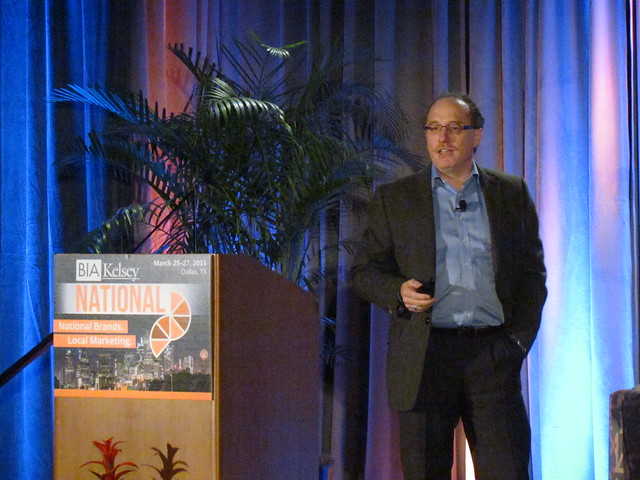
“The industry is changing right around us,” Peter Kravilovsky. We’ll be unveiling several new mergers and acquisitions in local media during the week.
At the intersection of national and local marketing, we face an accelerated speed of change, lack of experience talent in interactive, structural changes in the market that challenge traditional marketing practices. The move from push to pull communication is changing who is in control of the messaging. Gregg Stewart, CEO of 3rd Act Marketing began by framing the week’s discussion. The agency, formerly the commander of local marketing, is now just another partner at the table.
The pace of change has disrupted media planning, Stewart said. We need to be “agile,” even if that is an over-used term these days. Now planning must take place in mini-bursts throughout the year rather than all at once at the beginning of the year. We need to do more testing of channels and techniques, throwing out what doesn’t work fast.
Stewart says the talent vacuum is our biggest challenge as an industry. Organizations must understand opportunities to bring talent together for specific projects: Buy experience with a group of star digital talent, but the salaries often are often outsized compared to actual experience. It takes about 18 months to get a return from these investments in human resources, and that’s the current average length of tenure in the industry. Do more training and develop people from scratch, but there the agency has to defend the talent from poachers. Continuous development of talent is essential.
A hybrid model for human resources also can be an asset, as your people spread through the industry. Identify networks of relationships and build on those relationships. This points to the question of whether we are organized correctly as an industry. (We’ll be covering this question at BIA/Kelsey NOW in June). Early efforts to blend digital and traditional made the different media types enemies. Now we need to integrate and train across traditional and digital, especially as we go to mobile.

Even though 93 percent of sales take place offline right now, mobile and online are of increasing influence in that decision-making. We need to start to think about all these different channels as an integration problem. Retail is leading this, because it is where the transactions still happen.
Brand control is becoming problematic. We need to have the right people at the table to understand the problem of local marketing within the national brand budget. The big decisions at agencies have been based on large budgets, but small spends can make a bigger difference local.
The nature of brand is changing due to social. The customer feedback — ratings, likes, retweets — have given the customer a voice at the table that brands must recognize. We have to learn how to talk with our customers. Brands were not ready for the deluge of communication that has come flowing back from the market. Learning how to handle this, within the context of different goals and programs, is the new brand marketing challenge.
Reputation management is evolving. For the first time, Stewart says, I see platforms for reputation monitoring and management coming to market with useful tools. They are shifting to consulting arrangements, to help advise companies and brands on their use of particular channels.
And we are off to the next session.

This Post Has 0 Comments